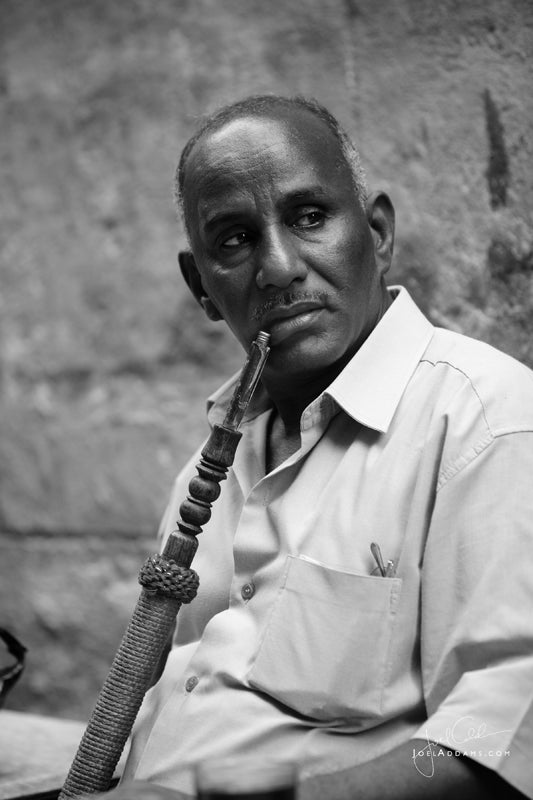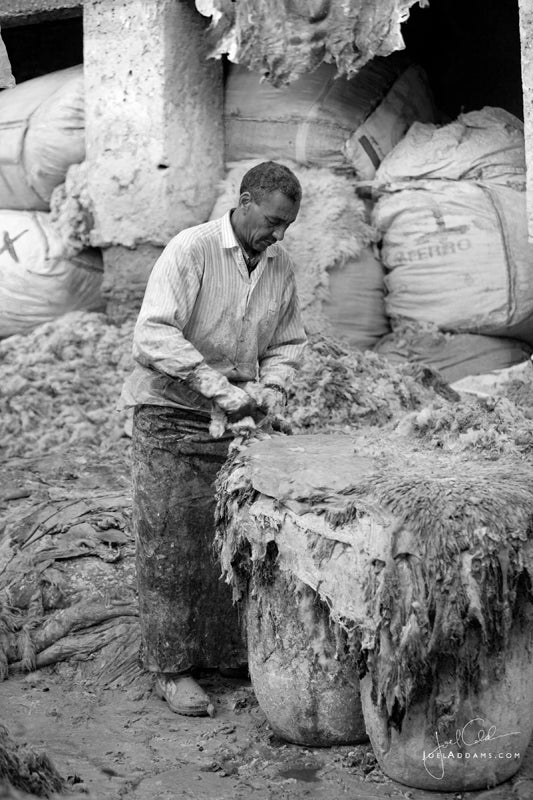Joel Addams is represented by Aurora Photos, a specialized photographic agency in Portland, Maine that focuses on landscape, travel, and outdoor imagery. His credits include National Geographic Online Edition, The Travel Channel, Utah Department of Tourism, as well as editorial and advertising campaigns around the world. His prints are found in private collections around the country and in Europe. His interests have included editorial work, often combined with his personal work and interest in humanitarian issues. Since 2011, he has been working on a documentary on eye care and tissue donation in Asia with the international non-profit Tissue Banks International, set to be released in early 2013. A firm believer in black and white, Joel released his first eBook "Power of the Glance: Travel Portraits in Black and White" on iTunes in December 2012. He explains some of the background here.
Joel: "It's no secret that I am very much influenced by Steve McCurry, perhaps because he had the most accessible work when I first became interested in photography. I was given his book PORTRAITS as a Christmas gift one year and have treasured it ever since. I probably have flipped through the pages fifty times. I like his style, and have noted that he has backed off of people a bit more than I have during the last five years. I actually think the 70-200 mm lens made it almost "too easy" as it gave that extra ability to crop out the distracting elements and focus on the face. To be honest, I haven't been completely pleased with that look, and I began to change my approach a bit to using a 50 mm fixed lens or even a wider zoom lens. To be sure I didn't use that 70-200 mm as a crutch, I actually sold it, and really haven't missed it that much. An 85 mm would be nice, but I fear the same problem would occur, and the wide angles and the 50 mm have taught me much more about how to use the environment when photographing people."
PHOTOGRAPHING PEOPLE
"I was told early on that photographing people was not lucrative. I knew it wasn't. I didn't really know how to respond to this except to myself, always knowing that you photograph things that you believe in and that brought you some artistic or other purposeful meaning in life. The creative fields are so different than other work one can engage in. I feel like working with one's hands is just as noble as working with one's mind. In a completely different sense, some of us also get to work in a space between those two: seeing things, painting things, creating things, sometimes for the pleasure of others and sometimes only for ourselves. In this sense, "Power of the Glance" is something I'm very satisfied with. It represents my learning about how to photograph people, why I photograph people, and the elements that (to me, at least) make a portrait or environmental portrait interesting. Some of my first images from Peru are in the book and some of my last from Nepal are also in the book. I'm not sure if people could ever tell which ones were from 2005 or 2012, but I can see it in my own work."
APPROACHING PEOPLE
"Much has been written about photographing people. The artistic academic world of photography has written at great length about who we like to photograph and why. The concept of photographing either those who seem very different than oneself or very similar has noted as well. I'm not sure I've been drawn to either group particularly; I find in some people an aesthetic that is simply captivating in a compositional sense or in a purely wild sense. You see this in some of the portraits of Nepal, especially. On the other hand, the plainness of a child or the clothes of someone may also produce a very interesting picture. Of note, I'm very unattracted to the Americanized smile. Children in the United States and similar countries have become quite conditioned to forcibly smile when a camera is presented, and one of my true delights in photographing people in most countries is that they are not conditioned at all to smile for the camera. This leaves a bit of a wonder and calm about their faces, and their gaze appears to me to be truer and more reflective of who they are."
SETTING UP THE NATURAL LIGHT PORTRAIT
"One of the challenges of setting up a natural light portrait is getting people in good, natural light. In the studio, you can move lights around, highlight hair, fill the face. The reward, too, with being outside or using natural light is that you don't have those options and finding people in a great lighting situation or coming back when they are in such a situation is like finding gold. I have found soft light to be the best to work with (like in the studio) and this often occurs just indoors through a window or door that does not have direct sunlight coming through it. In this way, there are great shots to be had all day long if you can hunt them down. I don't really pose people. I do move around them though. Many of the shots in the book are candid shots, meaning that I had tucked myself away for awhile and had become so normalized in the situation that the local people forgot that I was there. It's important to me that even after I take the shots, I show the subjects the picture and get their approval. I have been shocked continually that even the fiercest-looking characters have smiled and thought they were great. To facilitate this, I've always learned enough words in the local language to ask approval and exchange pleasantries. This is always well received, especially in countries where the language is difficult."
Check out the eBook "Power of the Glance: Travel Portraits in Black and White" on iTunes!
Buy the eBook on iTunes Now!





